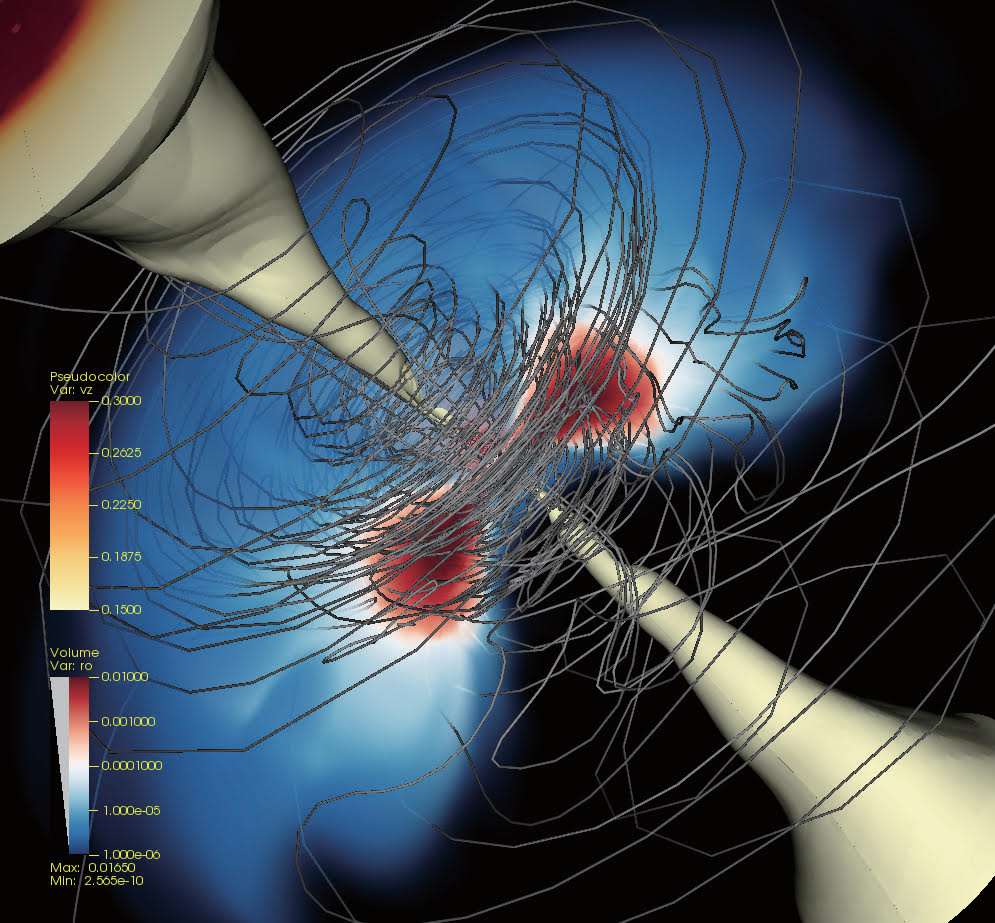Research Projects
Probing the structure and dynamics of accretion flows and outflows around black holes with radiation hydrodynamical simulations
This project aims to uncover the structure and dynamics of black hole accretion disks and the formation mechanisms of black hole jets and other outflows. Understanding the physics of black hole accretion disks and jet streams will directly lead to the understanding of the energy production mechanisms of high-energy astrophysical objects such as active galactic nuclei, X-ray binary stars, and gamma-ray bursts. It is also the basis for understanding the growth process of massive black holes.
Matter captured by the gravity of a black hole forms a rotating disk (accretion disk) that surrounds the black hole. Inside the disk, the gravitational energy of the matter falling into the black hole is converted into thermal energy, magnetic field energy, and light (radiation) energy. The large number of high-energy photons produced makes the black hole accretion disk one of the brightest objects in the universe. The amplified magnetic and radiation fields also accelerate some of the matter, producing black hole jets and disk winds. The jets and disk winds impart energy and momentum to the surrounding matter and have a significant effect on the evolution of the astrophysical object.
In order to investigate such complex and unsteady phenomena, we must simultaneously and consistently solve the magneto-hydrodynamic equations and the radiation transport equations in the strong gravitational field created by the black hole. This is an extremely difficult calculation, and only a limited number of research groups in the world have succeeded. We seek to uncover the structure of black hole accretion disks and the dynamics of jets and disk winds by making full use of radiation hydrodynamics calculations and general relativistic radiation magnetohydrodynamics simulations.

Fig. 1 General relativistic radiation hydrodynamic simulations of a black hole accretion disc and its bipolar jets. The thin lines represent the magnetic field. (From Takahashi et al. 2016.)


 和 英
和 英